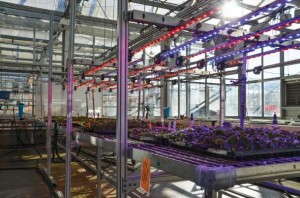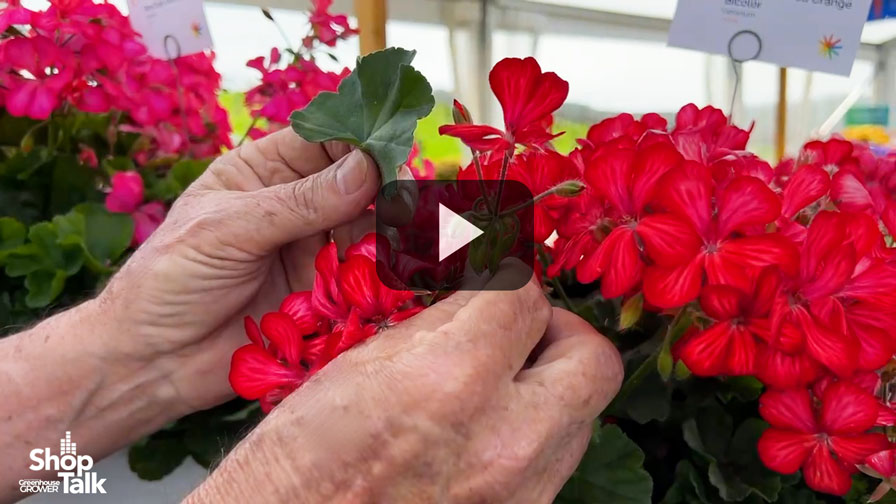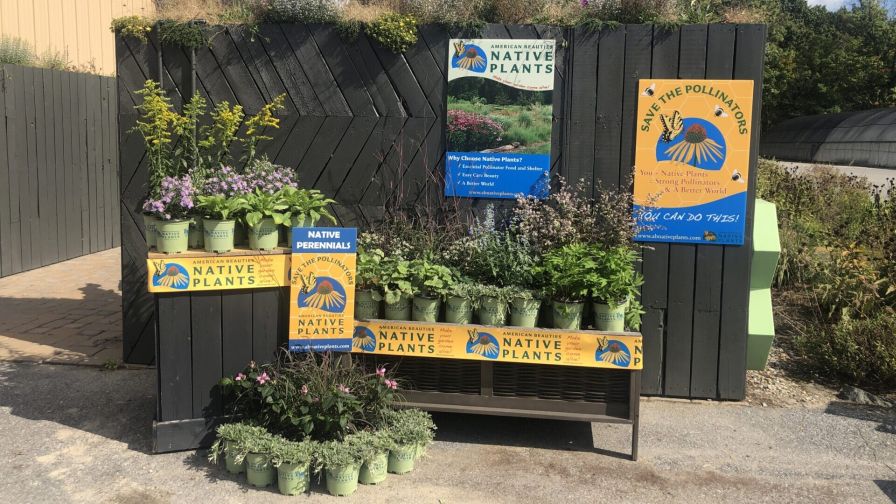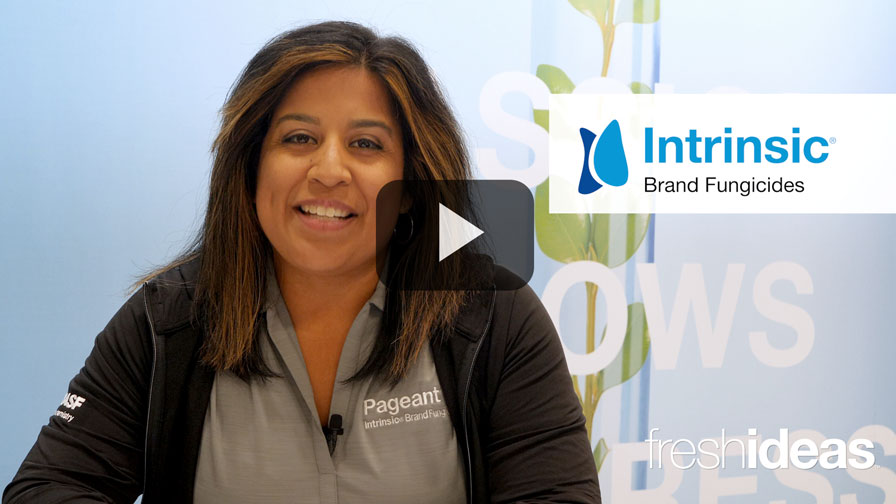Defining Precision Horticulture

Practical Software Solutions’ cart scanner helps growers increase delivery accuracy and reduce charge-backs at retail.
Precision horticulture is a science whereby growers use technology to fine-tune crop production practices. It helps growers determine exactly when and what to plant and what kind of inputs to use, how to control the environment, lighting, irrigation and nutrition for optimum yield and monitor how crops are growing, by greenhouse bay, zone and bench.
The equipment and systems growers use are all part of the grand scheme of Precision Horticulture, helping growers ultimately do their jobs as effectively and efficiently as possible.
From pot fillers, seeders and robotic transplanters to automated irrigation, lighting technology and environmental control systems, all the way to the software that provides inventory control and space management capabilities, 3D printers, RFID benches, cart readers and more, using Precision Horticulture, growers can optimize production processes from start to finish, to reduce costs and improve profits.
Here are some of the most recent advances on the market.
Software Helps Take The Guesswork Out Of Growing
Growers dealing with big box retailers need all the help they can get saving money, says Practical Software Solutions’ Greg Lafferty.
“The big retailers are well-known for helping you find 10 cents an item and then wanting that back,” he says.
Charge-backs from retailers, on top of these tight margins, can drive a grower under, Lafferty says.
“As opposed to shipping to a local garden center, where if they have an issue with what you shipped, they usually pick up the phone and you can work it out — with big box retailers, they just take it off the bill,” he says. “It’s one of those costs that hits a grower’s bottomline that they seemingly have no control over.”
To get more financially efficient, growers need to look at ways to minimize those chargebacks. Scan-by-cart technology is one way to do that, because it more accurately tracks inventory and produces reports for retailers.
“You can go from 70 to 80 percent accuracy, which leads to charge-backs, to a 99.5 percent range, so that’s real ROI,” Lafferty says. “This is an area where technology has really optimized the shipping and pooling process and improved communication with customers.”
Mapping out production and sales from start to finish can be enhanced with DemandLink, a tool that Practical Software Solutions recently integrated with its enterprise software, and its space management tool that the company developed with Young’s Plant Farm.
“DemandLink helps with the sales forecast, tracking 30,000 different data points and sales trends at the store level — it actually forecasted the housing bubble before it happened,” Lafferty says. “Then growers bring that forecast into our system, which looks at the schedule it takes to grow product and it helps them plan purchasing for raw materials inventory. Now, the software is driving dates, when it needs to be sown, transplanted, etc. Growers can load that data into the space management tool, which tells them where to put everything. It helps them see their gaps a little more visually and keeps them from placing a product where the environment is not conducive.”
From there, DemandLink tracks weather, economic data and buying trends — including at competitors’ stores — then, based on all of that information and what is in a grower’s inventory, recommends what should ship to stores on a given day.
Eventually, Lafferty says he would like to see the industry become more interconnected and integrated, to provide better availability and sales forecasting throughout the supply chain.

Lighting technology like LEDs could help growers overwinter expensive predatory insects, says Lloyd Traven of Peace Tree Farm.
Automation Advances Precision For Growers Of All Sizes
Advances in radio wireless communication between the actual machinery, manufacturer technical support and the grower will cut down on downtime during critical production periods, should anything malfunction, says AgriNomix President Robert Lando. AgriNomix is integrating routers into its machines’ electrical panels to allow this type of communication (see “20 Years Of Precision” on page 14).
Realizing that achieving the perfect setting on a piece of equipment is a process of fiddling with the controls, Lando says AgriNomix recently developed controls on a seeder for Urbinati that allows growers to start seeding at the last-used setting. That kind of precision has showed improved germination rates and saved growers time and money, he says.
One of the biggest misconceptions many growers have is that you have to be big to automate, Lando says. But some of his smaller customers are more automated than other, larger ones, because they need to be. Those growers who plan to be around for the next 15 years are the ones who are investing in automation and process optimization, and it’s more about being innovative and seeing where you need improvement than about size.
Lloyd Traven, co-owner of Peace Tree Farms, says his operation is a perfect example of this.
“Precision horticulture takes the size of your operation out of the equation, and gives us a chance to play on a more level, labor-efficient playing field,” he says. “We’re never going to be able to apply the economies of scale of a piece of equipment over the acreage that big growers do, so our per-acre cost is always going to be higher. But doesn’t have to price us out of the marketplace for it, either, and that’s hope. That’s all a lot of people are looking for. You’ve got to give me some hope that someday I can stop working 17 hours a day, seven days a week. Precision horticulture lets you do that.”

The Water Logic system from Rapid Automated is a simple and cost-effective add-on to hanging basket systems, to water with precision.
Sensors Keep Automation Costs Comparatively Low
Traven recently co-presented a series of ideas for process optimization, along with DRAMMwater’s Al Zylstra, at the Farwest Show in August. He says some of the ways growers can automate and improve efficiency include new improvements on systems that growers may already have, which are cost-effective and make a big difference.
“They say the guy who holds the hose grows the plant,” Traven says. “I’m saying I want to take the hose out of the grower’s hand and let that on/off decision be made by a sensor that the grower determines the setting of, so the execution of that command is much more precise. It makes it automatic, repeatable and data-driven. But you’re still relying on the grower to be the grower, which is really important.”
Developing technology from Decagon Devices and Damatex includes electronic, sensor-driven water pulsing irrigation that can water crops more precisely than grower-controlled methods, Traven says.
“The sensors are inserted into the soil and send out an electromagnetic pulse that reads a change in the frequency of the pulse, which is affected by the amount of water in the soil,” he says. When it hits a set point, it triggers a pulse of water. It’s programmable so growers can trigger the sensors after a certain amount of time, or set them to trigger when plants hit a moisture low.”
This system may pulse a crop eight to 10 times a day. It constantly keeps a set point of optimum moisture at all times, with no stress and no checking. Plants keep moving along effectively and the research is showing the benefits, Traven says.
“For instance with poinsettias, the wetter they are, up to a certain point, the less pythium you get. Because it’s never stressed, you never give the poinsettia an opportunity to get it. The unstressed plant is much tougher.
“These sensors allow growers to automatically trigger watering by bench or bay, according to a determined need based on data. That’s precision growing.”









